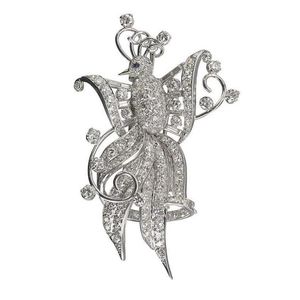Victorian Sterling Silver Tea & Coffee Service
You must be a subscriber, and be logged in to view price and dealer details.
Subscribe Now to view actual auction price for this item
When you subscribe, you have the option of setting the currency in which to display prices to $Au, $US, $NZ or Stg.
- Cartouche - An ornamental panel in the form of of a shield, oval or rectangular scroll with curling edges. It may be carved into the back of a chair or the top of a sideboard, or present on a piece of silver or jewellery, and contain the initials of the original owner, heraldic symbols, or some other inscription, such as the details of a presentation.
In ceramics the term defines the central area of a vase or similar with a decorative border in one of the shapes above, into which a decorative scene or figures have been painted. - Embossed / Repousse - Embossing, also known as repousse, is the technique of decorating metal with raised designs, by pressing or beating out the design from the reverse side of the object.It is the opposite of chasing, where the decoration is applied from the front. An embossed or repoussed object may have chasing applied to finish off the design.
- Victorian Period - The Victorian period of furniture and decorative arts design covers the reign of Queen Victoria from 1837 to 1901. There was not one dominant style of furniture in the Victorian period. Designers used and modified many historical styles such as Gothic, Tudor, Elizabethan, English Rococo, Neoclassical and others, although use of some styles, such as English Rococo and Gothic tended to dominate the furniture manufacture of the period.
The Victorian period was preceded by the Regency and William IV periods, and followed by the Edwardian period, named for Edward VII (1841 ? 1910) who was King of the United Kingdom and the British Dominions and Emperor of India for the brief period from 1901 until his death in 1910. - Sterling Silver - Sterling silver is a mixture of 92.5% pure silver and 7.5% of another metal, usually copper. Fine silver is 99.9% pure silver, and is relatively soft and the addition of the very small amount of copper gives the metal enough strength and hardness to be worked into jewellery, decorative and household objects.
This item has been included into following indexes:
- Barnard , Edward and John (London) - silver, maker or retailer 209
- coffee sets/services - silver items 444
-
tea sets/services
- silver, four piece 317
- silver, Victorian 328
Visually similar items

Diamond pendant/brooch, modelled as a stylised peacock pavé-set all over with circular-cut diamonds between baguette diamond accents, the eye highlighted with a circular-cut sapphire, the diamonds together weighing approximately 5.65 carats, mounted

Japanese export silver tea service, Meiji period (1868-1912), marked Jungin. Width 18 cm. decorated with repousse iris blossoms and hammered background texture, comprising lidded teapot, lidded sugar bowl, creamer, tongs and strainer

An Anglo-Indian silver dressing table box and mirror, and various silver-plated wares

A large sterling silver and partial gilt oval two handled centerpiece bowl, probably Italian in the manner of Buccellati. 63 cm wide, 26 cm high, 2,600 grams
